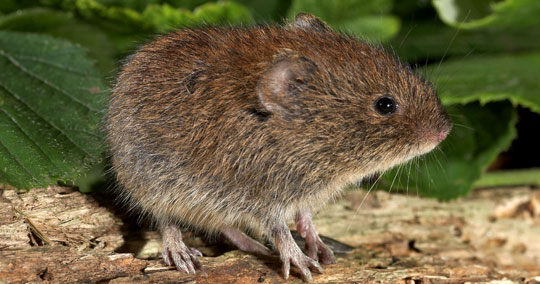Proven Vole Control Methods to Secure Your Property
Understanding Vole Pest Control: In-depth Insights on Infestation Avoidance and Treatment Approaches
As residential property proprietors and caretakers, the visibility of voles can present a substantial obstacle to maintaining the integrity of our outside rooms. Comprehending the ins and outs of vole behavior is important in creating effective bug control methods. By acknowledging the refined indicators of vole invasion early, we can take proactive procedures to stop widespread damage. In this discussion, we will check out the subtleties of vole actions, look into the identification of infestation indicators, and discover the most reliable prevention and treatment methods. Stay tuned to find the insights that will empower you to master vole bug control and guard your home against these evasive rats.
Comprehending Vole Behavior
Checking out the foraging patterns of voles uses valuable understandings into their habits and environment preferences. By observing their foraging actions, researchers can get a better understanding of where voles like to develop their environments and the extent of their environmental impact.
Research study shows that voles exhibit discerning feeding routines, preferring origins, roots, and seeds. This nutritional preference influences their foraging patterns, leading them to areas abundant in vegetation and ground cover. Furthermore, voles are understood to develop fancy passage systems for foraging and nesting objectives, showing a high degree of flexibility to their surroundings.
Recognizing vole actions is essential for implementing targeted bug control actions that interrupt their environment preferences and foraging tasks (vole control). By researching their habits, professionals can develop much more reliable avoidance and treatment approaches to take care of vole invasions

Identifying Indicators of Vole Invasion
Vole infestations can be found by recognizing certain indications of their presence in an area. Among the most usual signs of a vole invasion is the visibility of surface area runways. Voles produce networks of slim paths on the ground that are generally about 2 inches broad. These runways are usually found in grassy areas or underneath compost or ground cover where voles can relocate freely and search for food.
An additional vital indication of vole problem is the presence of small burrow openings in the ground. Voles dig superficial burrow systems with numerous entrances and exits. These burrows function as shelter and nesting sites for the voles. Furthermore, voles are known to leave behind chewed plant stems, origins, and light bulbs near their burrow openings, showing their feeding task in the location.
In addition, vole droppings can additionally symbolize their existence. Vole droppings are small, brownish, and round in shape, looking like grains of rice. Locating these droppings along paths or near burrow openings can verify a vole infestation. By being alert for these signs, home owners can without delay attend to vole invasions and prevent further damages.
Applying Positive Prevention Procedures

Furthermore, utilizing all-natural vole deterrents like castor oil-based repellents or killer urine can work as efficient preventative procedures. It is also suggested to on a regular basis check outdoor areas for any indications of vole task, such as runways or delve openings, to address possible infestations immediately. vole yard damage. By taking on these proactive avoidance methods, homeowner can dramatically decrease the probability of vole damages and maintain the health and wellness and visual appeals of their landscapes
Reliable Treatment Techniques
Including targeted trapping methods and making use of approved rodenticides are important components of efficient therapy techniques for managing vole invasions. Regular surveillance and maintenance are additionally essential aspects of successful therapy methods my sources to ensure that vole populations are maintained under control. By combining capturing, rodenticides, environment adjustment, and regular tracking, reliable vole insect control can be attained.
Monitoring and Upkeep Tips
Regular monitoring allows for the early detection of vole activity, enabling prompt intervention before infestations worsen. To effectively monitor vole populations, strategically placed traps can be utilized in vole runways or near burrow entries.
In addition, keeping a clean and neat landscape is necessary in vole avoidance. Cleaning away particles, such as stacks of wood or Find Out More dense vegetation, removes possible vole environments. On a regular basis cutting and trimming yards plant life helps in reducing vole hiding spots and decreases their accessibility to food sources.
Furthermore, recurring upkeep of physical barriers, such as fencings or cable mesh, is important to avoid vole invasion. Inspecting and fixing any type of damages to these frameworks makes sure that vole control remains reliable in protecting residential properties from invasions. By including these tracking and maintenance methods into a thorough vole insect control strategy, individuals can properly handle vole populaces and safeguard their properties from damages.
Verdict
Finally, mastering vole pest control calls for a strong understanding of vole habits, the capability to identify signs of infestation, applying proactive avoidance measures, effective treatment approaches, and regular tracking and maintenance. By taking a comprehensive method to vole control, individuals can effectively manage and protect against infestations, eventually securing their building and bordering setting from damage triggered by these tiny rats.
In this conversation, we will discover the subtleties of vole actions, delve into the identification of infestation signs, and discover the most effective avoidance and treatment approaches.Including targeted capturing techniques and using authorized rodenticides are necessary parts of reliable therapy approaches for taking care of vole problems. To properly check vole populaces, purposefully positioned catches can be used in vole runways or near burrow entrances. Inspecting and repairing any kind of problems to these frameworks guarantees that vole control remains reliable in guarding residential or commercial properties from infestations. By including these surveillance and maintenance practices right into a thorough vole bug control plan, people can successfully handle vole populations and shield their buildings from damages.